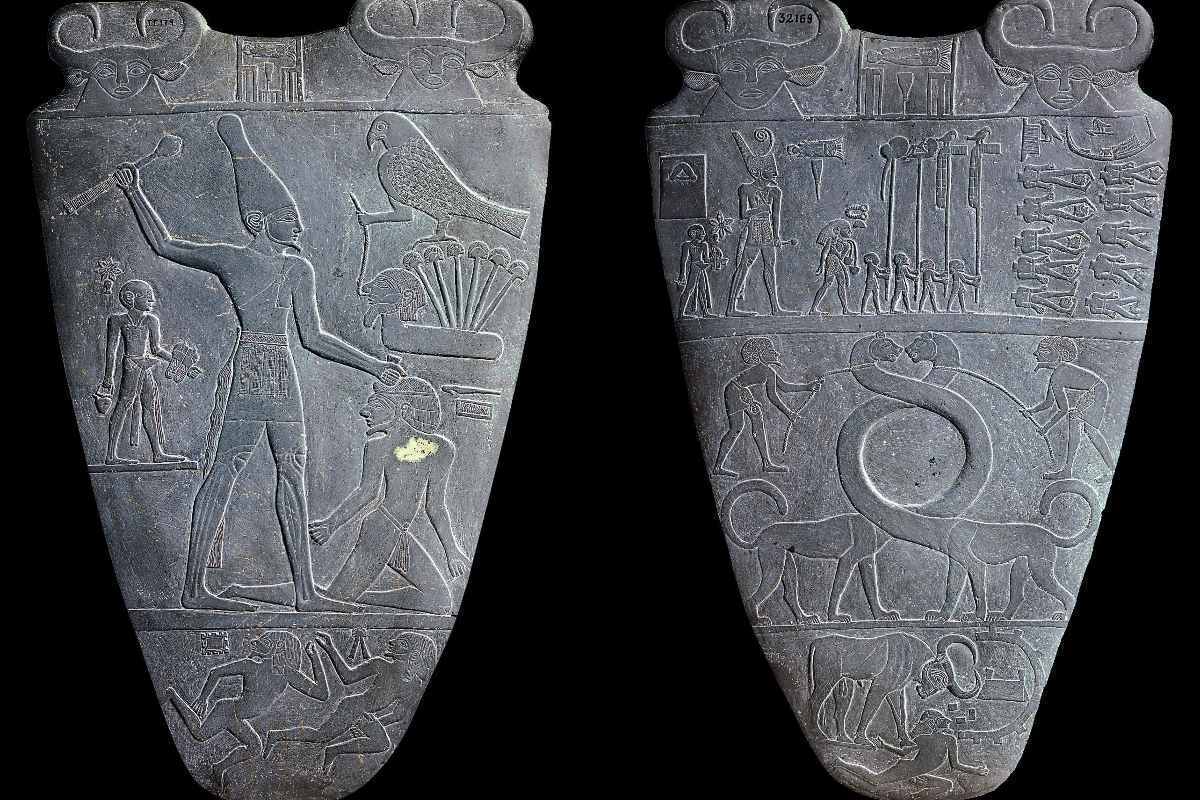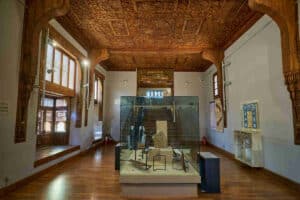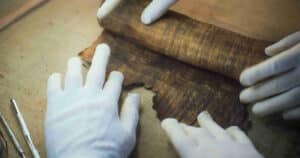Much is said (and we have here) about the Great Egyptian Museum at Giza, which takes Ancient Egyptian art and archaeology to another level. And as we said, a good part of his collection is made up of works that were exhibited at the Egyptian Museum in Cairo. The most important are undoubtedly the pieces that make up the tomb of Tutankhamun. The same happened with the famous mummy parade of 2021, with which important pharaohs and queens were transferred to the Museum of Egyptian Civilization. However, there are many others that remain in their original location and, barring last minute changes, will remain there. For this reason, in this post we focus on the Egyptian Museum in Cairo and the masterpieces you can find there… although the other two museums masterpieces that you can find there … although the other two museums have snatched much of its prominence and content.
Triad of Mycerinus
For many, it is the best exponent of the technical mastery and aesthetic elegance that reached the sculpture of Ancient Egypt, in periods as early as the Ancient Empire and Dynasty IV. The set is made of diorite rock and shows the pharaoh Mycerinus between the goddess Hathor and the divinity of Cinopolis. It was discovered at the beginning of the 20th century in the funerary temple of the pyramid of this pharaoh at Giza.

Narmer Palette
A piece that, beyond its artistic value, has an enormous historical and documentary scope: it is used by historians to mark the beginning of the unification of Ancient Egypt and, therefore, to mark the beginning of Dynasty I. On what basis? For in that the king represented, Narmer or Menes, wears on one side the red crown of Lower Egypt and, on the other, the white crown of Upper Egypt.
Akhenaten Statue
There is no doubt that everything surrounding Akhnaton, the ‘heretic king’ of the XVIIIth dynasty, is full of mystery. And in the Egyptian Museum in Cairo, the works of art that represent him also arouse great interest. In,this statue, in fact, appears in all its splendor and with attributes that helped to carve its unique appearance: androgynous features, wide hips, bulging belly, full lips … It was discovered in the Temple of Karnak and is made of sandstone.
Portrait of two brothers
For art history lovers, the so-called “Fayum portraits”, created in Roman times, are an exceptional testimony to the evolution of painting. And the best examples of this are in the Egyptian Museum of Cairo, with works such as such as
Portrait of two brothers
. The realism in the representation of the features and the vividness of the colors, achieved thanks to the encaustic technique, make this work one of the best of that period.
These are just four examples of the fact that, despite recent changes, works are still preserved in the Egyptian Museum in Cairo of extraordinary value. If you want to know them first hand with the help of experts in the field, just contact our agency.




